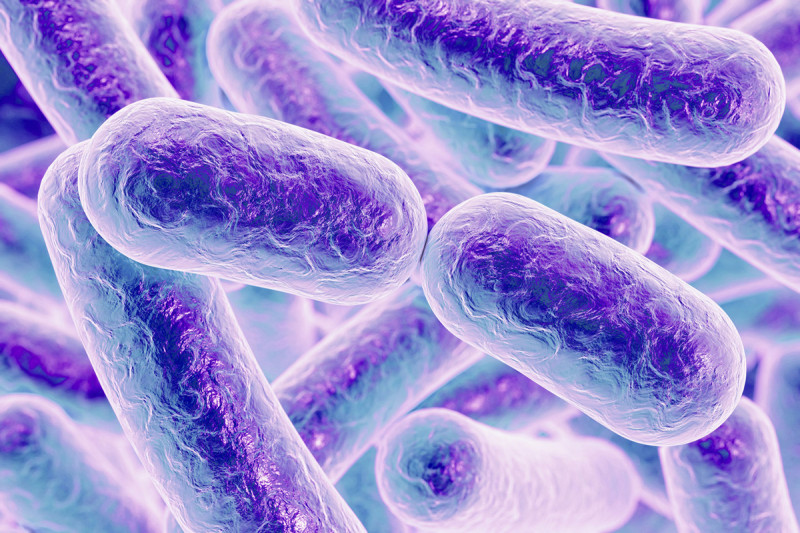
MSK researchers are studying the role of bacteria called bacteroidetes in drug-induced colitis.
When most people hear “bacteria,” they think of disease-causing germs. But everyone has an ecosystem of bacteria inside them, and most of these microbes are not dangerous. They help keep us healthy by performing jobs including processing nutrients we get from food, thwarting tooth decay, and preventing harmful bacteria from gaining control.
Cancer treatment can throw the balance of microbes out of whack, leading to potentially serious consequences. Memorial Sloan Kettering investigators such as Eric Pamer, Head of the Division of Medical Subspecialties, are examining the relationship between cancer and the microbiota (the microbes that live on and within us). Dr. Pamer’s team, together with MSK computational biologist Joao Xavier and collaborators from Yale University, received a grant earlier this year from the National Institutes of Health to investigate the connection between the microbiota and infections in cancer patients.
Decoding Side Effects from Immunotherapy
One study led by physician-scientist Jedd Wolchok and Dr. Pamer, published in February in Nature Communications, looked at how the balance of bacteria relates to colitis, an intestinal disorder, in people given the immunotherapy ipilimumab.
The drug, used mainly to treat melanoma, takes the brakes off the immune system, enabling immune cells to attack cancer. But when these cells are unleashed, side effects arise: In one-third of patients, the cells also attack the lining of the colon. Until this study was published, we didn’t know why.
The researchers analyzed fecal samples from patients before treatment and again afterward to look for a connection between colitis and certain strains of bacteria. They found patients who had higher levels of the bacterial phylum called bacteroidetes before treatment did not get colitis, suggesting that these bacteria provided some kind of protection.
Although still in the early stages, this research suggests that it may be possible to use bacteroidetes to prevent colitis in patients most likely to get it.
The Role of the Microbiota in Bone Marrow Transplantation
Dr. Pamer’s team also collaborates with Marcel van den Brink and Robert Jenq and other members of MSK’s Bone Marrow Transplantation (BMT) Service. Having intestinal microbiota that are out of balance causes side effects and affects outcomes after BMT.
One complication is graft-versus-host disease (GVHD) — when immune cells from the donor graft attack tissue in the recipient, especially the intestinal lining. MSK studies have demonstrated that microbiota play a role in GVHD.
Antibiotics that prevent infections while patients recover from BMTs also can destroy beneficial bacteria and allow harmful ones to dominate. Research from the team suggests that, in order to keep levels of healthy bacteria high, some antibiotics may be better treatments than others.
Recent studies have found that which antibiotics are given to patients after BMT can influence their outcomes, including how likely they are to get GVHD. Researchers are using mice to study how these antibiotics affect the microbiota and determine the effect that gut microorganisms have on GVHD.
Dr. van den Brink, who is also co-director of the Parker Institute for Cancer Immunotherapy, presented research on the link between the microbiota and cancer at the American Association for Cancer Research annual meeting in this spring.
Technology Advances the Field
One advance that has enabled this research is faster, more detailed gene sequencing. Sequencing technology allows characterization of all the bacteria types that live in the gastrointestinal tract by analyzing the microbiome, the combined genes of all the microbiota.
Computational biologists also create tools to make sense of the millions of DNA sequences that come from this analysis.






